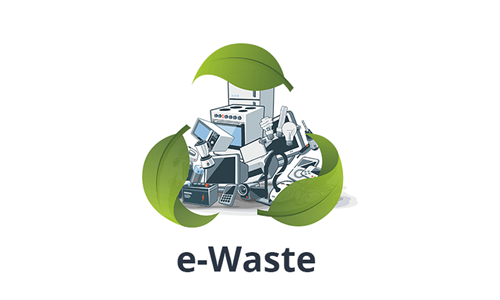Overview of E-Waste Recycling Authorization
EPR, which stands for Extended Producers Responsibility, is a government strategy in which producers are assigned vital responsibility for the treatment and disposal of consumer goods. EPR authorisation is required for producers, importers, manufacturers, and brand owners. EPR is a practise that combines environmental, economic, and social concerns. EPR is a policy method in which manufacturers are held financially and physically responsible for the treatment and disposal of post-consumer items. In theory, assigning such accountability might generate incentives to decrease waste at the source, promote environmentally friendly product design, and support public recycling and waste management goals. The OECD is working to broaden EPR to encompass more products, product groups, and waste streams, like as electrical appliances.
Policy pertaining to Extended Producer Responsibility
EPR was created in India to deal with e-waste. As a result, the central government decided to pass the E-waste Management Act of 2016. The EPR focuses on the following topics:
- As per environmental regulations, producers, importers, manufacturers, and brand owners are responsible for decreasing E-waste contamination.
- The Central Pollution Control Board is mandated under Rule 13 (1) of the 2016 Rules to grant, renew, or refuse Extended Producer Responsibility (EPR).
- The Central Pollution Control Board (CPCB) has directed the implementation of EPR, which includes particular instructions for producers on channelling, recycling, storage, disassembly, and refurbishment.
Who is eligible to apply for an EPR licence?
As one result, producers, importers, brand owners, and manufacturers in India can apply for an EPR licence. EPR accreditation is required for all E-waste makers and importers in India. Under the EPR authorisation, Indian and foreign manufacturers or importers of electoral and electronic equipment must obtain E-waste certification.

Producers

Importers

Brandowners
Lorem ipsum dolor sit amet, consectetur adipiscing elit. Ut elit tellus, luctus nec ullamcorper mattis, pulvinar dapibus leo.

This is the heading
Lorem ipsum dolor sit amet, consectetur adipiscing elit. Ut elit tellus, luctus nec ullamcorper mattis, pulvinar dapibus leo.
EPR Authorization in E-Waste Management
Given the increasing volume of e-waste in India, the government decided to reconsider their policy alternatives. It decided that shifting responsibility for specific items’ post-consumer phases to the manufacturers could be a valid option. Under the Extended Producer Responsibility (EPR) policy approach, producers are allocated significant financial and physical duty for the treatment or disposal of post-consumer items. Assigning such duty may result in the creation of incentives to decrease waste at the source, encourage environmentally friendly product design, and support public recycling and waste management objectives. EPR is being expanded by the OECD to include more products, product groups, and waste streams, such as electrical appliances and electronics.
Documents essential for E-waste EPR authorization
- KYC of company signatory
- KYC of Authorized signatory
- IEC Code
- Web site domain
- Toll-free No.
What is the process for granting/renewing and refusing EPR authorization?
Producers, importers, manufacturers, and brand owners should be required to submit a file to the CPCB.
Application verification
The Central Pollution Control Board (CPCB) or a state pollution control board may evaluate and investigate the given information within 25 days of receiving an application.
Responsible for Permission of Extensive Procedures (EPR)
The Central Pollution Control Board or the State Pollution Control Board seeks EPR authorization for E-waste after reviewing the submitted documentation and being satisfied with the extended producers’ responsibility plan.
EPR Validation (Extended Producers Responsibility)
The Producers Responsibility extension will be valid for five years.
What are the roles and responsibilities of EPR in relation to E-waste?
- Producers are responsible for collecting and directing waste from items with the same electrical and electronic equipment code.
- Producers develop a framework for channelling e-waste received from distributors and authorised service centres, as well as waste collected from “end-of-life” goods.
- Hazardous substances such as mercury and lead require pre-treatment, and the producer is responsible for disposal in a treatment, storage, and disposal facility.
- In the Extended Producers Responsibility plan, producers must be concerned with collecting Ewaste such as electrical and electronic equipment that has previously been placed on the market through a dealer, a collection centre, a Producers’ Responsibility Organization, buy-back arrangements, an exchange scheme, or a deposit-refund system.
- Producers must establish an awareness campaign and raise awareness through media, commercial, magazine, poster, or other means of communication, as well as product user manual that comes with the equipment.
- Producers must give contact information to consumers or bulk customers via their website, such as an address, email address, toll-free phone number, or helpline number.
What are the features of EPR authorization in the licencing of e-waste?
Extended producer responsibility is frequently mentioned as a strategy for mitigating planned obsolescence since it financially incentivizes manufacturers to design for recycling and make goods last longer. Governments may be alleviated of the financial strain of paying for and handling rubbish by shifting some of the cost responsibilities to the manufacturer, in addition to combating planned obsolescence. One of the benefits of EPR is that it becomes increasingly effective when countries who export E-waste are compelled to do so. Regulation of e-waste compels infrastructure to either cope with the garbage or adopt new manufacturing methods. When more countries implement these measures, it becomes more difficult for others to ignore the issues. Trash accumulated at ports after China prohibited the import of E-waste from the United States; for example, the absence of infrastructure surrounding recycling E-waste in the United States has been possible due to the freedom to export and producers’ indifference. The growing weight of e-waste is pressing countries to build infrastructure and compelling local and federal governments to put additional rules on corporations.

